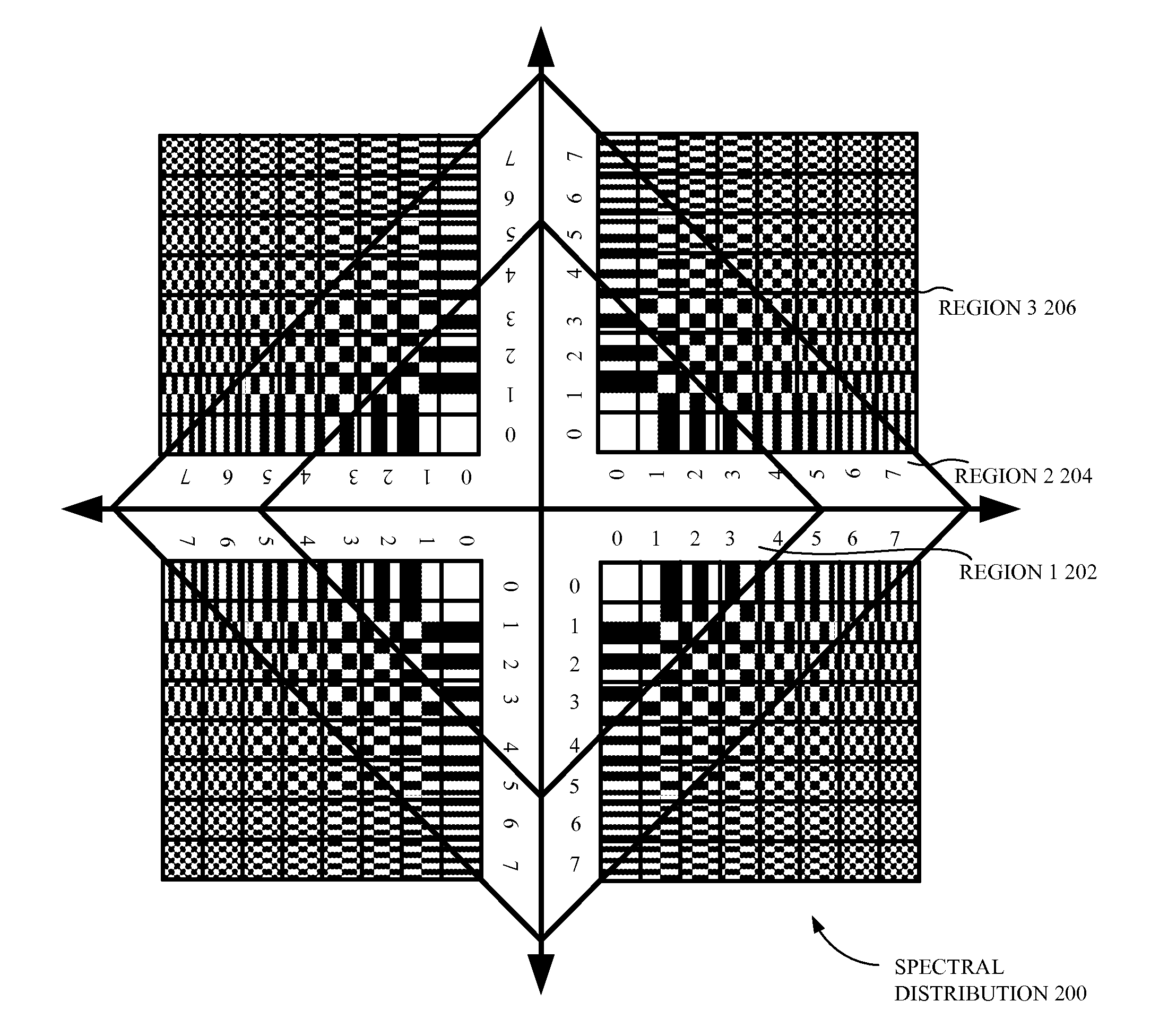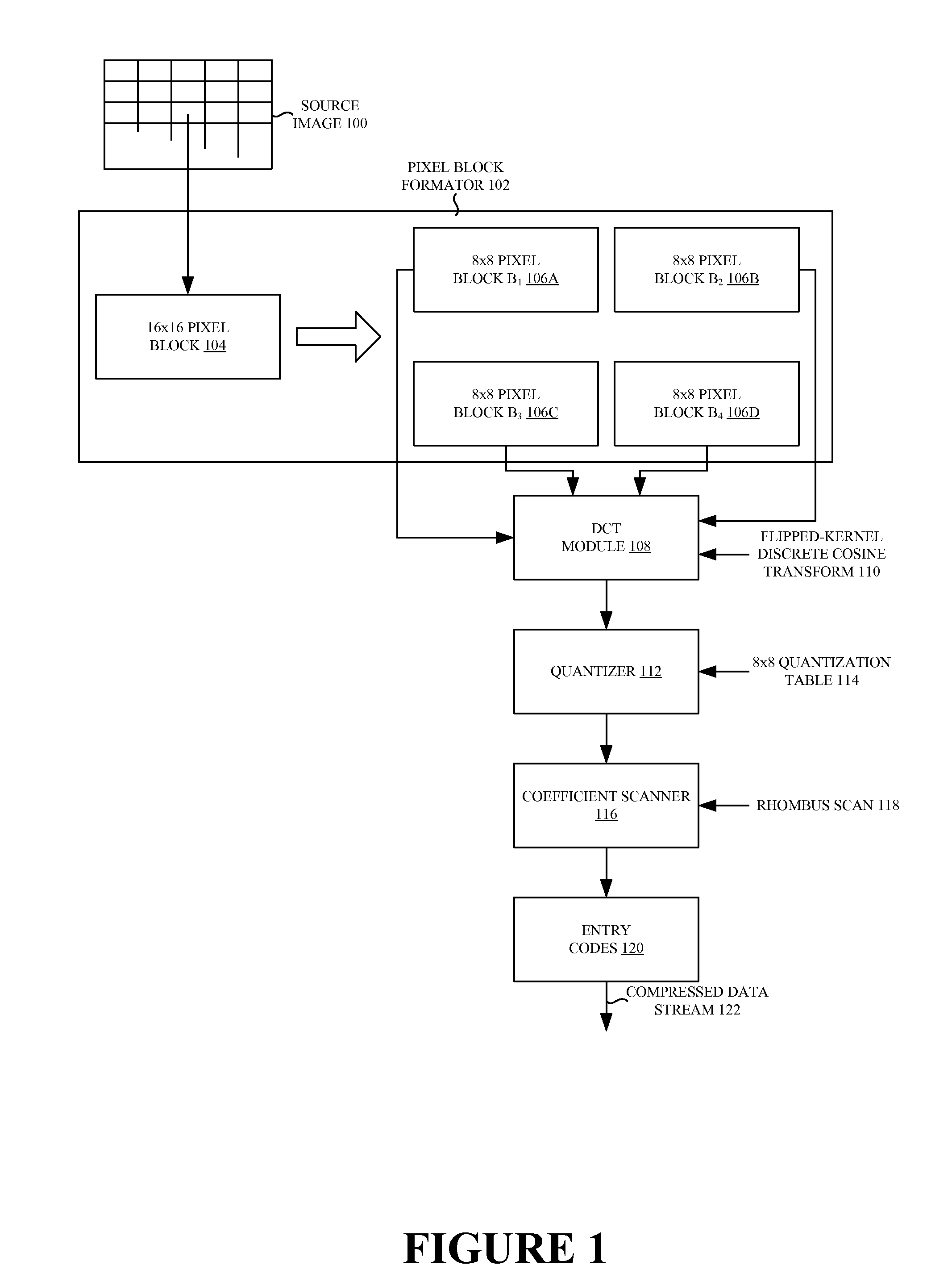DCT-based technique with rhombus scanning for image compression
a rhombus scanning and image compression technology, applied in the field of digital signal processing, can solve the problems of waste of storage system and data transmission resources in storing or transmitting redundant image data
- Summary
- Abstract
- Description
- Claims
- Application Information
AI Technical Summary
Benefits of technology
Problems solved by technology
Method used
Image
Examples
Embodiment Construction
[0015]Several methods and a system of a DCT-based technique with rhombus scanning for image compression are disclosed. Although the embodiments have been described with reference to specific example embodiments, it will be evident that various modifications and changes may be made to these embodiments without departing from the broader spirit and scope of the various embodiments.
[0016]FIG. 1 is a system view of image compression using DCT based technique, according to one embodiment. In one embodiment, sixteen by sixteen pixel block 104 is same as 16×16 pixel block 104 and eight by eight pixel block 106A-D is same as 8×8 pixel block B1-B4106A-D. Particularly, FIG. 1 illustrates a source image 100, a pixel block formator 102, a 16×16 pixel block 104, an 8×8 pixel block B1-B4106A-D, a DCT module 108, a flipped-kernel discrete cosine transform 110, a quantizer 112, an 8×8 quantization table 114, a coefficient scanner 116, a rhombus scan 118, an entropy coder 120 and a compressed data s...
PUM
 Login to View More
Login to View More Abstract
Description
Claims
Application Information
 Login to View More
Login to View More - R&D
- Intellectual Property
- Life Sciences
- Materials
- Tech Scout
- Unparalleled Data Quality
- Higher Quality Content
- 60% Fewer Hallucinations
Browse by: Latest US Patents, China's latest patents, Technical Efficacy Thesaurus, Application Domain, Technology Topic, Popular Technical Reports.
© 2025 PatSnap. All rights reserved.Legal|Privacy policy|Modern Slavery Act Transparency Statement|Sitemap|About US| Contact US: help@patsnap.com



